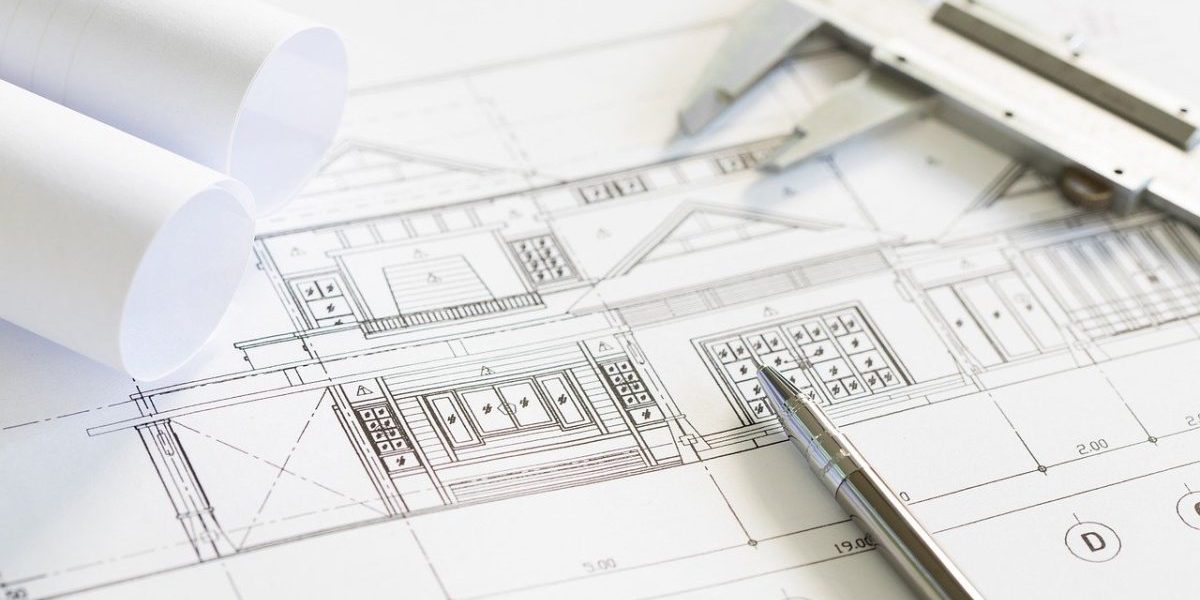Do you ever feel like shop drawings in construction are as mysterious as an intricate puzzle waiting to be solved? Well, fear not, because this article is here to shed light on the subject and provide you with a comprehensive overview of understanding shop drawings.
Consider this article your trusty guidebook, leading you through the intricacies of shop drawings like a seasoned explorer navigating uncharted territory.
From its very inception, construction projects rely heavily on accurate and detailed documentation to ensure seamless execution. Shop drawings play a crucial role in this process by providing a visual representation of how various components fit together like pieces of a puzzle.
These drawings serve as the bridge between design plans and actual construction, allowing architects, engineers, contractors, and subcontractors to visualize and communicate complex ideas effectively. So buckle up and get ready to dive into the world of shop drawings – where precision meets creativity in ways that will leave you both amazed and informed.
Introduction
In this discussion, you’ll learn about the definition and purpose of shop drawings in construction.
Shop drawings are detailed drawings that provide specific information about how elements of a construction project should be fabricated, assembled, and installed.
Accurate shop drawings play a crucial role in ensuring the successful execution of construction projects. They provide precise instructions for contractors and subcontractors to follow.
Definition and purpose of shop drawings
To truly grasp the essence of shop drawings, you must understand their purpose and how they serve as a vital communication tool in construction projects.
Shop drawings are detailed and dimensioned drawings that provide specific information about the fabrication, installation, and assembly of various components within a construction project. They’re typically created by specialized draftsmen or engineers who have extensive knowledge of the construction industry.
The purpose of shop drawings is to translate the design intent from architectural and engineering plans into practical instructions for contractors, fabricators, and installers. These drawings depict the exact dimensions, materials, finishes, and other relevant details required for each component or element in a project. By providing this level of specificity, shop drawings ensure that all parties involved have a clear understanding of what needs to be constructed or installed.
In addition to this, shop drawings also help identify any potential clashes or conflicts between different building systems before they occur on-site.
By understanding the definition and purpose of shop drawings, you can appreciate their importance as an essential part of construction projects. Accurate shop drawings play a crucial role in ensuring that all components are fabricated correctly and fit together seamlessly during construction. Without accurate shop drawings, there’s a higher risk of errors, delays, rework, and costly changes during the construction process. Thus, it’s vital for everyone involved in a project to recognize the significance of precise shop drawings in achieving successful outcomes without unnecessary setbacks or complications.
Importance of accurate shop drawings in construction projects
The precision of meticulous shop drawings acts as a rhythmic heartbeat, ensuring harmonious construction projects without missing a beat. Accurate shop drawings are essential for successful construction projects as they provide detailed information and instructions to all parties involved. These drawings serve as a guide for contractors, architects, engineers, and other professionals, allowing them to understand the design intent and execute their tasks accordingly. By providing accurate dimensions, materials specifications, and installation details, shop drawings help eliminate any guesswork or ambiguity in the construction process.
To emphasize the importance of accurate shop drawings in construction projects, let’s take a look at the following comparison table:
| Inaccurate Shop Drawings | Accurate Shop Drawings |
|---|---|
| Cause confusion and errors | Ensure clarity and precision |
| Lead to rework and delays | Save time and money |
| Compromise safety | Enhance project quality |
As you can see, accurate shop drawings play a vital role in preventing confusion, errors, rework, delays, and compromised safety measures, while simultaneously saving time and money by avoiding costly mistakes. With precise shop drawings in hand, everyone involved can work collaboratively toward achieving project success.
This understanding of the importance of accurate shop drawings sets the stage for exploring their meaning and significance further.
Shop Drawings: Meaning and Significance
In this discussion, you’ll learn about the meaning and significance of shop drawings in construction.
Shop drawings are detailed and specific drawings that provide information on how components and systems will be built or installed. They play a crucial role in the construction process as they act as a reference for contractors, fabricators, and suppliers to understand the design intent.
Key stakeholders involved in shop drawing creation and review include architects, engineers, contractors, fabricators, and suppliers.
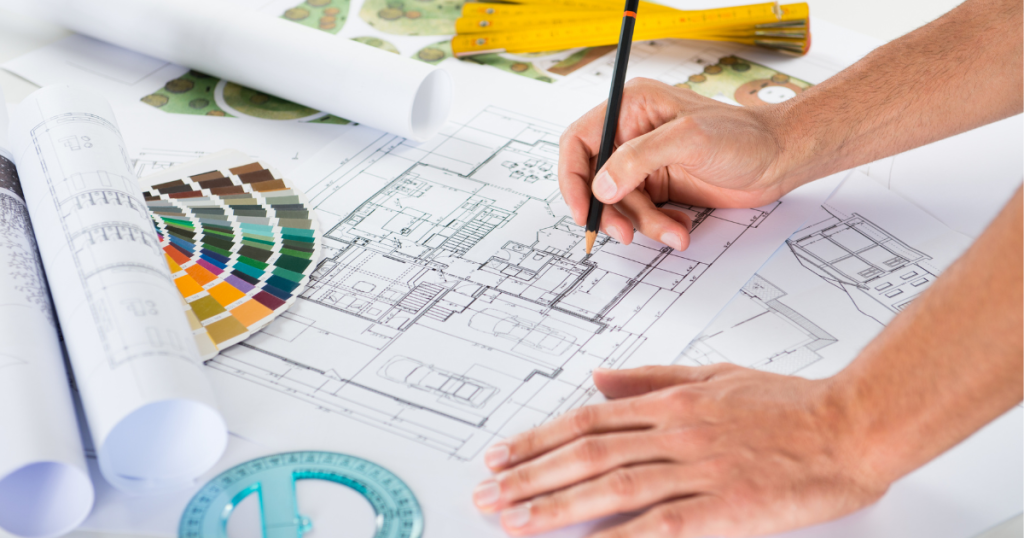
It’s important to distinguish between tender drawings (used for bidding purposes), construction drawings (used for building), and shop drawings (specific to fabrication or installation).
Definition of shop drawings in construction
Imagine yourself walking onto a construction site and instantly understanding the purpose and importance of shop drawings. Shop drawings in construction refer to detailed, scaled plans that provide a visual representation of how different components of a building or structure will be fabricated and installed. These drawings are typically created by subcontractors, manufacturers, or suppliers and serve as a crucial communication tool between various stakeholders involved in the construction process.
By using shop drawings, architects, engineers, contractors, and other professionals can ensure that everyone is on the same page regarding design specifications and installation methods. Having accurate and comprehensive shop drawings is essential because they help prevent costly mistakes, reduce rework, and improve overall project efficiency. These drawings include detailed information about materials, dimensions, tolerances, finishes, connections, and more. They allow contractors to identify any potential clashes or conflicts between different systems before construction begins.
Moreover, shop drawings facilitate coordination among different trades by highlighting areas where mechanical systems intersect with structural elements or architectural features. Ultimately, these detailed plans contribute to smoother construction processes by providing clear instructions for fabricators and installers.
Transitioning into the subsequent section about the role and purpose of shop drawings in the construction process, it’s important to note that while their primary function is to guide fabrication and installation activities on-site successfully, they also play a vital role in ensuring compliance with building codes and regulations.
Role and purpose of shop drawings in the construction process
Walking onto a construction site, you can instantly grasp the vital role and purpose of shop drawings in the building process. These detailed drawings serve as a crucial communication tool between various stakeholders involved in a construction project. They provide a clear visual representation of how different components and systems will be installed, ensuring that everyone is on the same page.
- Shop drawings help contractors and subcontractors understand the project requirements in detail. By providing precise measurements, annotations, and specifications, these drawings enable them to plan their work effectively. They can determine the exact materials needed, identify potential conflicts or coordination issues, and develop strategies to overcome them.
- Architects and engineers rely on shop drawings to ensure that their designs are accurately translated into reality. These drawings allow them to review and approve proposed construction methods before they are implemented on-site. By verifying that all design elements are correctly represented, architects can ensure that the final product meets the desired aesthetic and functional standards.
- Shop drawings also play a significant role in facilitating collaboration among different trade professionals involved in a construction project. Electricians, plumbers, HVAC technicians, and other specialists can refer to these drawings to understand how their respective systems integrate with others within the overall building structure.
With an understanding of the role and purpose of shop drawings in construction firmly established, it’s important to explore the key stakeholders involved in their creation and review process without further ado.
Key stakeholders involved in the shop drawing creation and review
Picture yourself on a construction site, surrounded by a symphony of collaboration and expertise as key stakeholders harmonize their efforts in the creation and review of shop drawings.
In this dynamic environment, architects play a crucial role by providing initial design drawings that serve as the foundation for shop drawings. These design drawings outline the overall vision and specifications for the project, acting as a guide for engineers, drafters, and other professionals involved in the process.
Engineers then take these design drawings and develop detailed calculations and specifications specific to their respective disciplines. They ensure that structural integrity is maintained, electrical systems are properly planned, plumbing layouts are accurate, and HVAC systems are designed efficiently.
Drafters use this information to create detailed shop drawings that provide precise measurements, materials lists, installation instructions, and other necessary details.
As you transition into the subsequent section about ‘distinctions between tender drawings, construction drawings, and shop drawings,’ it becomes clear that each type of drawing serves its purpose within the construction process.
Tender drawings are primarily used during bidding stages to give contractors an understanding of what needs to be built.
Construction drawings are created after the contract award and provide more detailed information necessary for building structures or executing specific tasks.
Shop drawings go even further by elaborating on the construction drawing’s details to ensure proper coordination between different trades involved in constructing or installing components such as steel beams or mechanical equipment.
By understanding how these various types of drawing work together, you gain insight into how critical each stakeholder’s contribution is to successfully complete a construction project with accuracy and efficiency.
Distinctions between tender drawings, construction drawings, and shop drawings
As you delve into the topic of distinctions between tender drawings, construction drawings, and shop drawings, you can gain a deeper understanding of how each type of drawing contributes to the successful completion of a construction project.
Tender drawings, also known as design or contract drawings, are typically prepared by architects or engineers and serve as a visual representation of the project’s design intent. These drawings outline the overall concept and provide information on dimensions, materials, and finishes.
Construction drawings, on the other hand, are more detailed and specific to the actual construction process. They include information such as structural details, electrical layouts, plumbing systems, and HVAC (heating ventilation air conditioning) plans.
Shop drawings are a subset of construction drawings that focus on specific components or elements within a project. They are typically created by subcontractors or suppliers who specialize in fabricating or manufacturing these components. Shop drawings provide detailed information about how these components will be fabricated or installed in accordance with the design intent specified in the tender drawings. This level of detail ensures that all parties involved have a clear understanding of what is required for successful implementation.
As you explore further into the components of the shop drawings section…
Components of Shop Drawings
In this discussion, you’ll learn about the different components of shop drawings in construction. Architectural drawings, structural drawings, MEP (Mechanical, Electrical, Plumbing) drawings, and other specialty trade drawings are the key points to focus on.
These components provide detailed information about the various aspects of a construction project and are essential for accurate implementation.
Architectural drawings
When it comes to understanding shop drawings in construction, you’ll need to familiarize yourself with floor plans, elevations, sections, and details.
Floor plans provide a bird’s eye view of the building layout and show the arrangement of rooms and spaces.
Elevations give you a visual representation of how the building looks from different perspectives, while sections cut through the building to reveal its internal structure.
Finally, details provide specific information on materials, dimensions, and construction methods used in various parts of the building.

Floor plans
Explore the floor plans to gain a clear understanding of how your dream space will come to life. These detailed drawings provide a bird’s-eye view of the entire construction project, showing the layout and dimensions of each room, as well as the location of doors, windows, and other architectural elements.
By studying the floor plans, you can visualize how different areas will flow together and ensure that everything is designed according to your preferences and needs. Once you’ve familiarized yourself with the floor plans, it’s time to move on to exploring elevations and delving deeper into the design details of your new space.
Elevations
Take a closer look at the elevations to visualize how your dream space will come to life in three dimensions, showcasing the unique design elements and architectural details that will enhance the overall aesthetic of your new space.
Elevations are two-dimensional drawings that provide a vertical view of the building’s exterior or interior walls. They show the height, width, and depth of each wall, as well as any openings such as doors or windows.
By examining these elevations, you can get a better understanding of how different parts of your space will look from various angles. This information is crucial for ensuring that all architectural features are accurately represented in the final construction.
Now let’s move on to discussing sections, which offer even more insights into the inner workings of your future space without skipping a beat.
Sections
Now that you have a good understanding of elevations, let’s dive into the next important aspect of shop drawings: sections.
Sections are drawings that provide a vertical cut-through view of a building or structure. They allow you to visualize what the interior and exterior of the building will look like from various angles.
Sections are crucial in understanding how different components fit together and interact within the overall design. As you examine these detailed views, keep in mind four key points:
1) Sections help you see how different materials and elements come together to create a solid structure.
2) They give you insights into the spatial relationships between floors, walls, ceilings, and other architectural features.
3) Sections enable you to identify potential clashes or conflicts between different systems or components before construction begins.
4) By studying sections closely, you can better understand how various building elements contribute to overall functionality and aesthetics.
With this knowledge in mind, we can now move on to exploring another crucial aspect of shop drawings: details.
Details
Examine the details of the shop drawings to gain a deeper understanding of how different components come together and create a solid structure, ensuring you don’t miss any crucial elements like ‘the devil is in the details.’
Details in shop drawings provide specific information about dimensions, materials, connections, and finishes. They show how various parts fit together and help contractors visualize the final product.
Paying close attention to these details is essential for accurate construction and avoiding costly mistakes. Once you’ve thoroughly examined the details, you can move on to understanding structural drawings, which provide an overview of the overall building design and its load-bearing elements.
Structural drawings
In this discussion, you’ll explore foundation and framing plans, steel reinforcement details, and structural connections. These are key points in understanding structural drawings. You’ll gain insight into how these components work together to create a strong and stable structure.
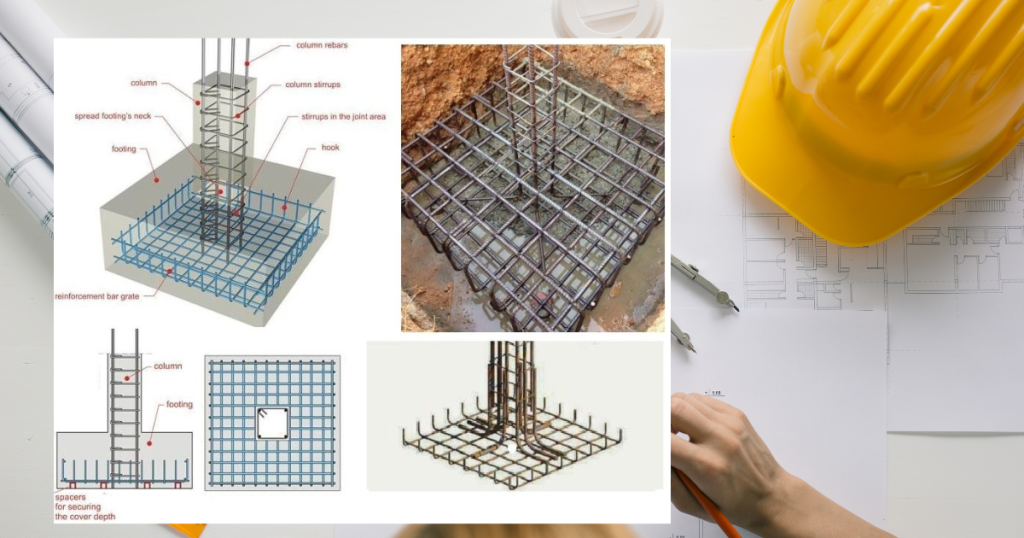
Foundation and framing plans
The foundation and framing plans provide a detailed layout of the construction’s structural elements. These plans show the location, size, and shape of the foundation walls, footings, columns, beams, and other supporting members. They also indicate any necessary anchor bolts or hold-downs that need to be installed for stability.
The framing plan shows the arrangement of floor joists, roof trusses or rafters, and wall studs. It provides information on how these components are connected and supported to ensure structural integrity.
Once you have a clear understanding of the foundation and framing plans, you can move on to examining the steel reinforcement details in order to further understand how all these elements come together in a construction project.
Steel reinforcement details
Steel reinforcement details play a crucial role in ensuring the structural strength and stability of a construction project. The steel reinforcement provides added support to concrete structures, helping them withstand various forces such as tension, compression, and shearing. It is important to accurately depict these details in shop drawings to ensure proper installation and adherence to design specifications. A well-detailed reinforcement plan specifies the type, size, spacing, and placement of reinforcing bars within the concrete elements. This information is typically presented in a table format, which helps contractors visualize the required reinforcements for each section of the structure. For example:
| Element | Bar Type | Bar Size | Spacing |
|---|---|---|---|
| Foundation | Rebar | #5 | 12 inches |
| Columns | Rebar | #8 | 18 inches |
| Beams | Reinforcing | #6 | 16 inches |
| Slab | Wire Mesh | N/A | 4×4 inches |
These details provide essential guidance for contractors during construction, ensuring that the appropriate reinforcements are installed correctly according to engineering specifications. As we move into discussing ‘structural connections,’ it’s important to understand how these connections interact with the steel reinforcements for optimal structural integrity.
Structural connections
Make sure you have a solid grasp on how structural connections come into play to ensure the stability and strength of your construction project. Structural connections are crucial elements in any building or infrastructure, as they provide the means for transferring loads and forces between different components. These connections can be achieved through various methods such as welding, bolting, or using specialized fasteners.
Each type of connection has its own advantages and considerations, depending on the specific requirements of the project. It’s important to understand how these connections work and their limitations to guarantee the integrity of the structure. With a clear understanding of structural connections, you can move forward with confidence in planning and executing your construction project.
Now let’s transition into discussing MEP (Mechanical, Electrical, Plumbing) drawings and their significance in construction projects.
MEP (Mechanical, Electrical, Plumbing) drawings
In this discussion, you’ll explore the key points of HVAC (Heating, Ventilation, and Air Conditioning), electrical systems, and plumbing and sanitary systems in MEP drawings.
You’ll learn about how these systems are designed and integrated into the overall construction project.
Understanding these aspects is crucial for ensuring a functional and efficient building that meets all necessary regulations and standards.
HVAC (Heating, Ventilation, and Air Conditioning)
Explore the world of HVAC in shop drawings and discover how you can create a comfortable and efficient environment for your building.
In HVAC shop drawings, you’ll find detailed plans and specifications for heating, ventilation, and air conditioning systems. These drawings provide crucial information about ductwork layout, equipment placement, pipe sizing, and control systems.
By understanding these drawings, you can ensure that the HVAC system in your building is designed to meet the specific needs of your space.
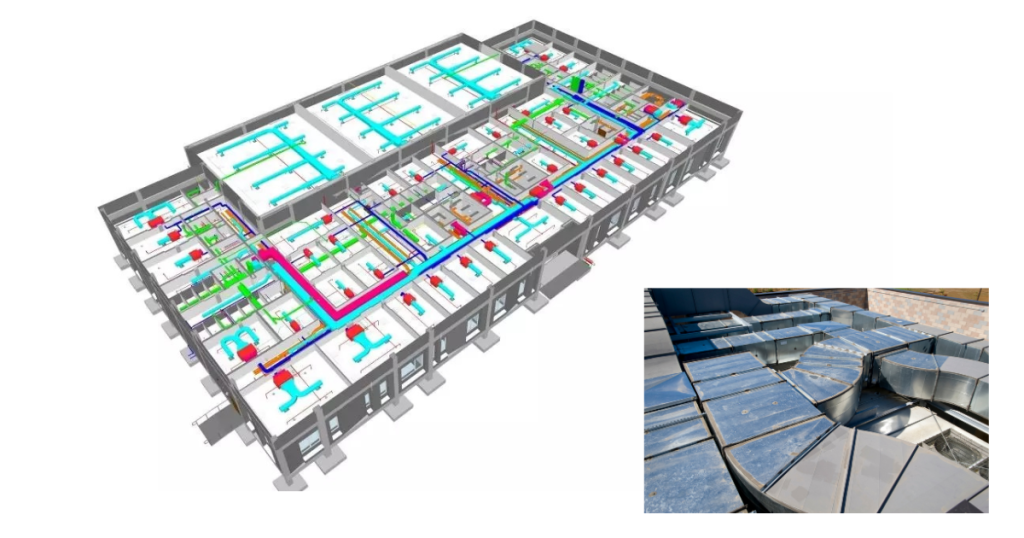
Once you’ve got a solid grasp of HVAC drawings, you can then move on to exploring electrical systems and their integration with the overall construction process.
Electrical systems
Once you grasp the intricacies of HVAC systems, you’ll be amazed at how seamlessly electrical systems integrate into the overall construction process.
Electrical systems play a crucial role in providing power and lighting to various areas of a building. They consist of wiring, outlets, switches, circuit breakers, and other components that ensure a safe and reliable flow of electricity throughout the structure.
Understanding electrical shop drawings is essential for coordinating the installation of these systems with other trades and ensuring compliance with building codes and regulations. From designing the layout to specifying wire sizes and locations of outlets, these drawings provide detailed instructions for electricians to follow during construction.
In addition to powering lights and appliances, electrical systems also support communication networks, security systems, fire alarms, and other important functions within a building.
As you delve into the world of electrical shop drawings, you’ll gain an appreciation for how these intricate systems contribute to the functionality and efficiency of a construction project.
Now let’s transition into learning about plumbing and sanitary systems without skipping a beat.
Plumbing and sanitary systems
Get ready to dive into the world of plumbing and sanitary systems, because you’ll be amazed at how these essential components work together to keep a building running smoothly.
1) Plumbing systems are responsible for bringing clean water into a building and removing wastewater. They consist of pipes, fittings, valves, and fixtures that ensure water flows efficiently throughout the entire structure.
2) Sanitary systems, on the other hand, focus on managing sewage and waste disposal. This involves designing drainage systems that transport waste away from the building to treatment facilities or septic tanks.
3) Both plumbing and sanitary systems require careful planning to ensure they meet safety standards and local regulations. Designers must consider factors such as pipe sizing, slope requirements, and venting options to prevent blockages and maintain proper flow.
4) Additionally, these systems often incorporate specialized equipment like pumps, backflow prevention devices, and water heaters to enhance their functionality.
Now that you have an understanding of plumbing and sanitary systems in construction projects, let’s move on to exploring other specialty trade drawings.
Other specialty trade drawings
In this section, you’ll learn about other specialty trade drawings in construction. These drawings cover important systems such as fire protection, security, and acoustic and audiovisual systems.
Understanding these drawings is crucial for coordinating the installation of these systems with other trades and ensuring their proper functioning in the building.
Fire protection systems
Fire protection systems play a crucial role in safeguarding buildings from potential fires, ensuring the safety of occupants, and preventing any major damage. These systems include fire alarms, sprinkler systems, fire extinguishers, and smoke detectors. Fire alarms are designed to detect the presence of smoke or heat and alert occupants to evacuate the building.
Sprinkler systems automatically release water when they sense a fire, helping to contain and suppress it until firefighters arrive. Fire extinguishers provide a means for individuals to quickly extinguish small fires before they spread.
Smoke detectors can detect the early signs of a fire and alert building occupants before it becomes dangerous. By having these systems in place, buildings can greatly reduce the risk of fires and protect lives and property.
Now let’s move on to discussing security systems without skipping a beat.
Security systems
Now that you have a good understanding of fire protection systems, let’s move on to another essential aspect of construction: security systems. In today’s world, it is crucial to prioritize the safety and security of any building or structure. Security systems play a vital role in ensuring that unauthorized access is prevented and potential threats are detected in a timely manner.
These systems encompass a range of components such as surveillance cameras, access control systems, alarms, and monitoring devices. To give you a better idea, imagine a bustling office building with state-of-the-art security measures in place. On one side of the table below, we have various types of security devices installed strategically throughout the premises. These devices work together to create multiple layers of protection and provide real-time monitoring capabilities. On the other side, we have different areas within the building where these devices are positioned for maximum effectiveness:
| Security Devices | Building Areas |
|---|---|
| Surveillance cameras | Entrances |
| Access control | Parking lots |
| Alarms | Hallways |
| Monitoring devices | Emergency exits |
| High-security zones |
As we transition into our next topic about acoustic and audiovisual systems, it’s important to note that just like fire protection and security systems, these systems also require careful planning and coordination in shop drawings to ensure their proper installation and functionality.
Acoustic and audiovisual systems
Moving forward, it’s crucial to prioritize the proper planning and coordination of acoustic and audiovisual systems to ensure their successful installation and functionality. To achieve this, consider the following key points:
- Determine the specific requirements: Begin by identifying the desired acoustic and audiovisual outcomes for each space within the construction project. Take into account factors such as room size, purpose, and intended use to determine the appropriate system specifications.
- Engage with experts: Collaborate with professionals experienced in designing and installing acoustic and audiovisual systems. Their expertise can help optimize sound quality, speaker placement, screen positioning, and overall system integration.
- Integrate technology seamlessly: Ensure that all acoustic materials (such as insulation or soundproofing) are properly incorporated during construction or renovation phases to minimize unwanted noise interference. Additionally, plan for cable routing and power distribution to accommodate speakers, microphones, projectors, screens, or any other necessary equipment.
By prioritizing these considerations during the planning stage of your construction project’s acoustic and audiovisual systems, you can create spaces that deliver optimal sound quality while meeting functional requirements seamlessly.
Transitioning into the subsequent section about the creation and review process, it is important to establish a detailed workflow that ensures effective collaboration among all stakeholders involved in bringing these systems to life.
Creation and Review Process
In order to create shop drawings, you’ll need to follow several steps. This includes gathering all relevant information, such as architectural and engineering drawings, specifications, and project requirements.
Once the shop drawings are created, they must undergo a thorough review and coordination process to ensure accuracy and compatibility with other project components. This step is crucial in preventing errors or conflicts during the construction phase.
Steps involved in creating shop drawings
To create shop drawings, you’ll start by obtaining the project specifications and design drawings. This will give you a clear understanding of what needs to be included in the shop drawings.
Next, you’ll need to measure and document the existing site conditions accurately to ensure that the shop drawings align with the actual construction site.
Then, you’ll develop detailed shop drawings that include all necessary dimensions, materials, and installation instructions.
Throughout this process, it’s crucial to coordinate with other trades involved in the construction project to ensure seamless integration of various systems and components.
Obtaining project specifications and design drawings
Once you’ve got your hands on the project specifications and design drawings, it’s like finding a treasure map that leads you to a pot of gold. These documents provide crucial information about the project, giving you a clear understanding of what needs to be done. The project specifications outline the requirements, materials, and standards that must be followed, while the design drawings visually depict how everything should come together.
It’s important to carefully review these documents because they serve as your guide throughout the shop drawing creation process. You need to pay close attention to details such as dimensions, materials, and any specific instructions provided. This initial step sets the foundation for accurate and precise shop drawings. Transitioning into measuring and documenting existing site conditions allows you to gather additional essential information before diving into creating detailed shop drawings.
Measuring and documenting existing site conditions
Before diving into creating detailed shop drawings, it’s crucial to start by measuring and documenting the existing site conditions. This step is essential as it provides a foundation for accurate and precise shop drawings.
By carefully measuring the site, including dimensions, elevations, and any necessary details, you can ensure that your shop drawings align with the actual conditions of the project. It allows you to identify potential challenges or constraints that may impact the design or construction process.
Once you have gathered all the necessary information about the existing site conditions, you can seamlessly transition into developing detailed shop drawings that accurately reflect the project specifications and design requirements.
Developing detailed shop drawings
Now that you’ve got all the necessary measurements and details about the existing site conditions, it’s time to dive into creating super-detailed shop drawings that will blow everyone’s minds!
These detailed drawings serve as a blueprint for the construction process, providing precise instructions on how each component of the project should be fabricated and installed.
With the help of computer-aided design (CAD) software, you’ll be able to develop accurate representations of each element, including dimensions, materials, finishes, and connections.
The level of detail in these drawings is crucial to ensure smooth coordination between different trades involved in the project.
By clearly illustrating how various systems and components come together, you’ll facilitate effective communication with other trades such as electrical, plumbing, or structural engineering teams.
This seamless coordination will ultimately contribute to a successful construction process without any conflicts or delays.
Coordinating with other trades
Coordinating with other trades is essential for ensuring a smooth construction process and avoiding conflicts or delays. As a contractor, you need to communicate and collaborate with various trades involved in the project. This includes electricians, plumbers, HVAC technicians, and structural engineers. By coordinating with these trades, you can address any potential clashes between different systems or installations early on. This proactive approach helps prevent costly rework or modifications down the line.
Additionally, coordinating with other trades allows for efficient scheduling of work activities, optimizing resource allocation and minimizing downtime.
In the next section about the importance of review and coordination, we will explore how regular meetings and thorough reviews can further enhance collaboration among different trade professionals without compromising on quality or timelines.
Importance of review and coordination
In this discussion, you’ll explore the importance of review and coordination in the context of shop drawings. Collaboration among different disciplines is crucial to ensure that all aspects of a project are considered and integrated seamlessly.
Clash detection and resolution play a vital role in identifying any conflicts or clashes between various elements and finding effective solutions.
Addressing design conflicts and errors promptly helps prevent delays, rework, and costly mistakes in the construction process.
Collaboration among different disciplines
Imagine yourself as a conductor, harmoniously bringing together different instruments in a symphony of collaboration among different disciplines in the construction industry. To achieve successful outcomes, effective collaboration is essential between architects, engineers, contractors, and subcontractors.
This coordination ensures that all aspects of the project are aligned and integrated seamlessly. Here are five key elements that contribute to successful collaboration:
- Clear Communication: Open lines of communication allow for the exchange of ideas and information between team members.
- Mutual Understanding: Each discipline must have a clear understanding of their respective roles and responsibilities to avoid conflicts or misunderstandings.
- Regular Meetings: Frequent meetings provide an opportunity to discuss progress, address issues promptly, and make necessary adjustments.
- Document Sharing: Sharing relevant documents such as design drawings, specifications, and shop drawings allows for accurate interpretation and feedback from all parties involved.
- Problem-Solving Approach: A collaborative mindset fosters creativity and encourages problem-solving when facing challenges.
By fostering collaboration among different disciplines, projects can benefit from diverse perspectives and expertise. This sets the foundation for effective clash detection and resolution without compromising on quality or efficiency.
Clash detection and resolution
Effective collaboration among different disciplines in the construction industry ensures successful clash detection and resolution, allowing projects to benefit from diverse perspectives and expertise. By bringing together professionals from various fields such as architecture, engineering, and construction, potential clashes or conflicts between design elements can be identified early on.
Through close coordination and communication, these clashes can be resolved before they become costly issues during construction. Clash detection software is often used to analyze the shop drawings of each discipline and identify any inconsistencies or clashes in the design.
This collaborative effort not only helps in avoiding errors but also allows for innovative solutions to be developed by leveraging the unique insights of each discipline involved. Addressing design conflicts and errors becomes easier when there is a shared understanding of project goals and an open line of communication between all stakeholders involved.
Addressing design conflicts and errors
Collaboration among different disciplines in construction helps address design conflicts and errors, with a staggering 90% of clashes being resolved before construction begins. This collaborative effort ensures that potential issues are identified and rectified early on, saving both time and resources.
By actively involving architects, engineers, contractors, and subcontractors in the design process, conflicts can be detected through clash detection software or manual reviews. Once identified, these conflicts are addressed by making necessary adjustments to the design or coordinating changes across disciplines.
The benefits of this collaborative approach include improved coordination between different trades, reduced rework during construction, enhanced constructability, and ultimately a smoother construction process.
Moving forward into the next section about ‘shop drawing standards and guidelines,’ it’s important to understand how these collaborative efforts translate into effective communication through detailed shop drawings.
Shop Drawing Standards and Guidelines
In this discussion, you’ll explore the importance of industry standards and codes in shop drawing production. You’ll also learn about the significance of ensuring conformity to design intent and specifications in order to achieve a successful construction project.
Additionally, you’ll discover the role of quality control and assurance as well as best practices for creating accurate and detailed shop drawings.
Industry standards and codes
The construction industry has established a set of standards and codes that play a crucial role in ensuring the safety and quality of shop drawings. These industry standards outline specific requirements for various aspects of construction, such as structural integrity, fire protection, electrical systems, and more. By adhering to these standards, contractors can ensure that their shop drawings meet all necessary criteria and are in compliance with legal regulations.
In addition to industry standards, there are also specific building codes that must be followed when creating shop drawings. Building codes are regulations set forth by local governments or other regulatory bodies to establish minimum requirements for the design, construction, and maintenance of buildings. These codes cover a wide range of areas including structural stability, accessibility, energy efficiency, and fire safety.
It’s essential for designers and drafters to have a thorough understanding of these codes so that they can accurately incorporate them into their shop drawings. This ensures that the final product not only meets the client’s needs but also complies with all relevant building regulations.
With an understanding of industry standards and building codes in place, it becomes easier to move on to the next section about conformity to design intent and specifications without missing any important steps.
Conformity to design intent and specifications
Ensure that your shop drawings accurately reflect the design intent and specifications, capturing all necessary details and dimensions to effectively communicate the desired outcome.
It is crucial to closely review the architectural and engineering plans, as well as any applicable industry standards and codes, to ensure compliance with all requirements. Pay attention to every aspect of the design, including materials, finishes, structural elements, and aesthetic features.
By doing so, you can guarantee that your shop drawings align with the intended design vision.
To achieve conformity to design intent and specifications, collaborate closely with both architects and engineers involved in the project. Seek clarification whenever necessary to fully understand their expectations for each element of the construction.
Additionally, make sure that all relevant parties have reviewed and approved your shop drawings before proceeding further. By ensuring accuracy from the outset, potential errors or discrepancies can be identified early on in the process and addressed promptly.
With a clear understanding of the design intent and specifications in mind throughout your work on shop drawings, you can confidently move forward in executing quality control measures to ensure a successful construction project without compromising the safety or functionality of structures.
Quality control and assurance
Now that you understand the importance of conformity to design intent and specifications, let’s dive into the next crucial aspect of shop drawings in construction: quality control and assurance.
As a contractor or engineer, it’s imperative to ensure that the shop drawings accurately represent the intended design and meet all necessary standards. Quality control involves a systematic inspection process to identify any discrepancies or errors in the drawings, while quality assurance focuses on preventing issues from occurring in the first place through proper documentation and adherence to best practices.
To effectively carry out quality control and assurance for shop drawings, consider implementing the following steps:
- Thoroughly review each drawing: Take the time to carefully examine every detail of the shop drawings, comparing them against the design plans and specifications. Look for any inconsistencies or deviations that may affect the construction process.
- Seek input from relevant stakeholders: Consult with architects, engineers, subcontractors, and other involved parties to gather feedback on the accuracy and feasibility of the shop drawings. Their expertise can help identify potential problems early on.
- Conduct regular site inspections: Visit the construction site regularly to verify that what has been depicted in the shop drawings aligns with what is being built. This hands-on approach allows for the timely identification of any issues that may arise during construction.
- Document changes and revisions: Keep a clear record of any modifications made to the original shop drawings as well as their justifications. This documentation ensures transparency throughout the project and helps maintain accountability.
By adhering to these quality control and assurance measures, you can minimize errors, prevent costly rework, and ensure that your shop drawings accurately reflect both design intent and project requirements.
With this understanding of quality control established, let’s explore best practices for creating accurate and detailed shop drawings without compromising efficiency or clarity.
Best practices for accurate and detailed shop drawings
Implementing best practices for accurate and detailed shop drawings can significantly enhance the efficiency and clarity of the construction process. By following these practices, you can ensure that your shop drawings effectively communicate the design intent and specifications to all stakeholders involved in the project. One important best practice is to maintain clear and consistent labeling throughout the drawings. This includes using standardized symbols, abbreviations, and notations that are easily understood by everyone on the team. This consistency helps avoid confusion and reduces errors during fabrication and installation.
Another crucial best practice is to include detailed dimensions in your shop drawings. This ensures that all components are accurately sized and aligned with each other, minimizing potential conflicts or rework on-site. Additionally, providing material specifications for each component helps ensure that the right materials are ordered and used in construction.
Incorporating a 3-column and 5-row table can further emphasize key points related to accurate and detailed shop drawings:
| Best Practices |
|---|
| Clear and consistent labeling |
| Detailed Dimensions |
| Material specifications |
| Regular coordination meetings |
| Thorough quality control checks |
These best practices contribute to improved communication, reduced errors, and smoother construction processes overall. By implementing them diligently, you can create shop drawings that facilitate efficient construction management without any unnecessary delays or complications.
Shop Drawings in Construction Management
In construction management, shop drawings play a crucial role in various aspects of the project. They help in project scheduling by providing detailed information about the materials and components needed for each stage of construction.
Shop drawings are also essential for procurement and material ordering, as they provide accurate measurements and specifications that ensure the right materials are purchased.
Additionally, shop drawings go through a submittal and approval process, allowing for any necessary changes or revisions during construction to be addressed efficiently.
Role of shop drawings in project scheduling
Are you aware of the crucial role that shop drawings play in project scheduling? Shop drawings are essential tools that help keep construction projects on track and ensure timely completion. These detailed drawings provide a visual representation of various components, systems, and details of the project. By incorporating shop drawings into the project schedule, construction teams can effectively plan and coordinate activities, allocate resources, and anticipate any potential delays or conflicts.
To better understand the role of shop drawings in project scheduling, let’s take a look at the following table:
| Role of Shop Drawings in Project Scheduling | Benefits |
|---|---|
| Coordination with other trades | Ensures smooth workflow by identifying clashes or conflicts between different building systems. |
| Material procurement planning | Facilitates timely ordering and delivery of materials based on accurate measurements and specifications. |
| Resource allocation | Helps allocate manpower and equipment efficiently to different stages of the construction process. |
| Construction sequencing | Provides a clear sequence of tasks to be performed, enabling effective planning for each stage. |
| Identifying critical path | Allows identification of tasks that directly impact project duration and helps prioritize activities accordingly. |
With an understanding of how shop drawings contribute to project scheduling, we can now transition into discussing their role in procurement and material ordering without missing a beat.
Procurement and material ordering
Let’s delve into how procurement and material orders are seamlessly integrated with the use of shop drawings in project scheduling. When it comes to construction projects, timely procurement of materials is crucial for ensuring smooth progress. Shop drawings provide detailed information about the required materials, including their quantities, specifications, and dimensions. This allows project teams to accurately estimate material requirements and initiate the procurement process well in advance.
With shop drawings as a reference, contractors can create comprehensive material schedules that outline when each item needs to be ordered and delivered to the site. By integrating this information into the project schedule, teams can ensure that materials arrive on time, minimizing delays and avoiding last-minute rushes.
To further enhance understanding, here are three ways in which procurement and material ordering benefit from shop drawings:
- Accurate Material Identification: Shop drawings provide specific details about each component or element of a structure. This enables accurate identification of materials required for construction.
- Efficient Vendor Communication: Using shop drawings as a visual aid during vendor communication ensures clear understanding between contractors and suppliers regarding the desired specifications of materials.
- Streamlined Ordering Process: Shop drawings serve as a guide for creating comprehensive lists of required materials, making it easier to place orders with vendors.
With procurement and material ordering being seamlessly integrated into project scheduling through shop drawings’ utilization, teams can effectively coordinate these activities alongside other construction tasks.
Now let’s transition into discussing the submittal and approval process involved in working with shop drawings for effective project management without any delay.
Submittal and approval process
Smooth project progress is like a well-choreographed dance, and the submittal and approval process of shop drawings adds the perfect rhythm to ensure seamless coordination among stakeholders. During this process, contractors, architects, engineers, and other parties involved review the detailed drawings prepared by subcontractors or suppliers. These drawings provide essential information about the design intent and how various components will be fabricated and installed.
The submittal phase allows for a close examination of these drawings to ensure they meet project specifications and adhere to local codes and regulations. Once reviewed, the drawings are approved if they meet all requirements or returned for revisions if any discrepancies are found. This meticulous process ensures that everyone is on the same page before work begins on-site.
As we transition into the subsequent section about changes and revisions during construction, it’s important to note that the submittal and approval process sets a solid foundation for effective communication throughout the project lifecycle. By carefully reviewing shop drawings in advance, potential issues can be identified early on, reducing conflicts during construction.

With approved shop drawings in hand, changes can be made with confidence as there is a clear reference point for contractors to follow. Whether it’s revising dimensions or substituting materials due to unforeseen circumstances, having an established submittal and approval process streamlines decision-making and minimizes delays.
Changes and revisions during construction
As you navigate through the construction process, you’ll inevitably encounter changes and revisions that require careful attention and swift decision-making. These changes can range from minor adjustments to major modifications, but regardless of their scale, they can have a significant impact on the overall project timeline and budget. It is crucial to have a systematic approach to managing these changes to ensure that they are properly communicated, reviewed, and implemented.
To effectively track and manage changes during construction, many construction professionals rely on shop drawings. Shop drawings serve as detailed illustrations that depict specific components or systems within a construction project. They provide valuable information such as dimensions, materials, installation methods, and other important details necessary for contractors to execute the work accurately. During the construction phase, it is common for revisions or modifications to be made based on unforeseen conditions or design updates. The table below outlines the typical process involved in handling changes and revisions during construction:
| Step | Description | Responsibility |
|---|---|---|
| 1 | Identify change or revision needed | Project team (contractor/architect/engineer) |
| 2 | The document proposed change/revision | Contractor/subcontractor |
| 3 | Submit change request for approval | Contractor |
As you can see from the table above, there is a clear workflow in place when it comes to managing changes and revisions during construction. The responsibility lies with the project team to identify any necessary changes, document them accurately, and submit them for approval. This ensures that all parties involved are aware of the modifications being made and can make informed decisions regarding their implementation.
Transition into ‘utilizing technology in shop drawing creation’: Embracing technology has revolutionized various aspects of the construction industry, including shop drawing creation. By utilizing advanced software tools and computer-aided design (CAD) programs, professionals can now create more precise and detailed shop drawings efficiently.
Utilizing Technology in Shop Drawing Creation
In this discussion, you’ll explore how technology is utilized in the creation of shop drawings. You’ll learn about the use of Computer-Aided Design (CAD) software and Building Information Modeling (BIM) to streamline the process.
Additionally, you’ll discover the benefits and challenges that come with adopting technologies such as 3D visualization and virtual reality in shop drawing creation.
Computer-Aided Design (CAD) software
You can use CAD software to create detailed shop drawings, which can increase productivity by up to 20%. CAD software allows you to easily design and draft intricate construction plans with precision and accuracy. With the ability to create 2D and 3D models, you can visualize your designs in a realistic manner, making it easier to identify any potential issues or conflicts before construction begins.
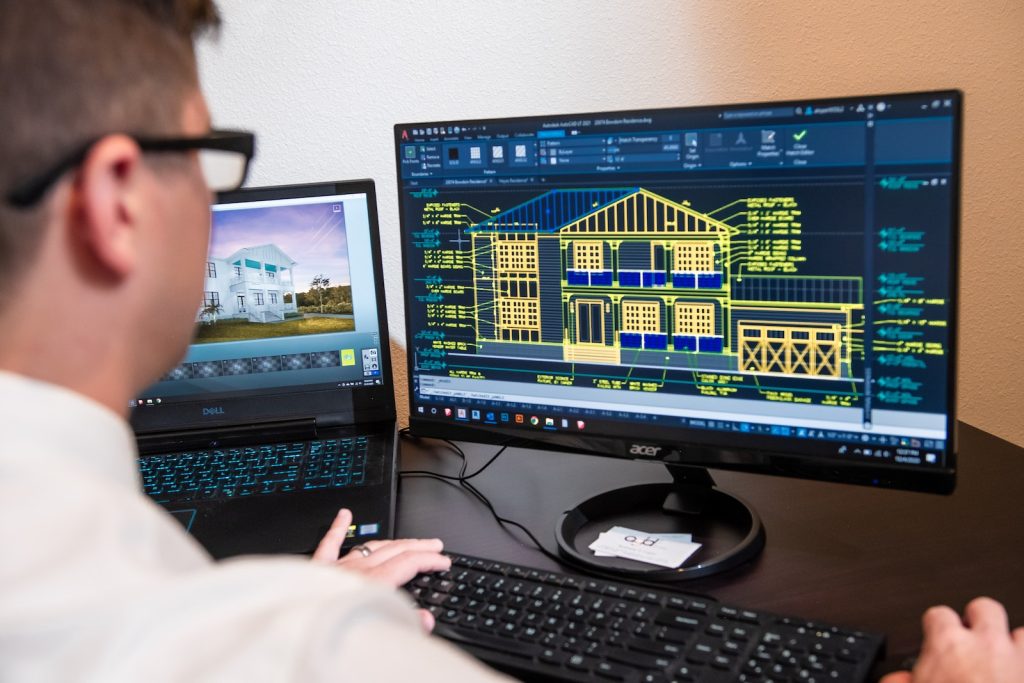
The software also enables you to make quick edits or modifications, saving time and reducing errors. By utilizing CAD software for shop drawing creation, you can streamline the process and improve efficiency in your construction projects.
Transitioning into the subsequent section about building information modeling (BIM), this technology takes CAD software a step further by providing a comprehensive platform for collaboration among all stakeholders involved in a construction project. BIM integrates various types of data into a single digital model, allowing for better coordination between different disciplines such as architecture, engineering, and construction.
Building Information Modeling (BIM)
BIM takes CAD software to the next level by integrating various types of data into a single digital model, allowing for seamless collaboration among all stakeholders involved in a construction project. With BIM, you can create a comprehensive and detailed virtual representation of the entire building process – from design and construction to operation and maintenance.
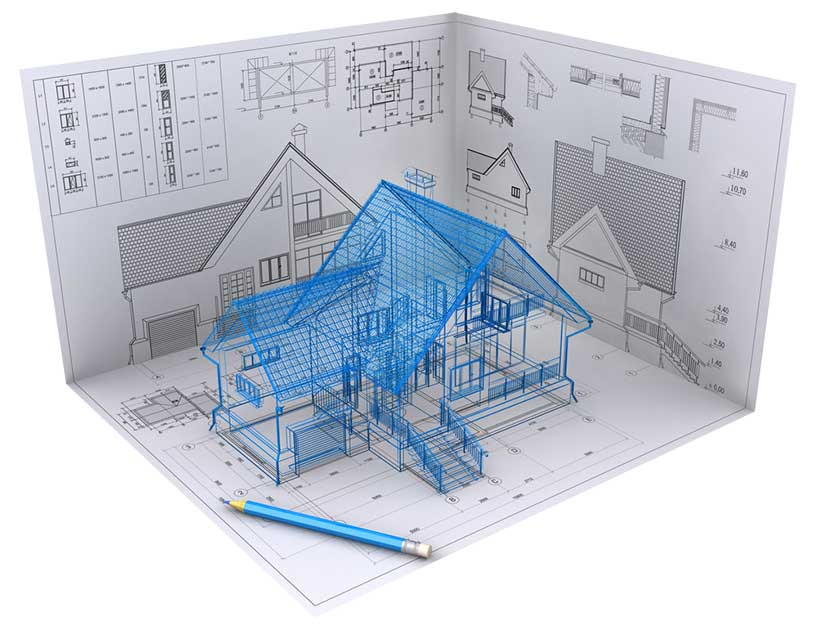
This not only improves communication and coordination between architects, engineers, contractors, and owners but also helps in detecting clashes or conflicts early on, minimizing rework and avoiding costly delays.
One key benefit of using BIM is that it enables real-time visualization of the project. You can explore different design options and simulate how they would look in real life before making any physical changes. This helps you make informed decisions about the aesthetics, functionality, and sustainability aspects of the building.
Another advantage is that BIM allows for better cost estimation throughout the project lifecycle. By linking quantities to objects in the digital model, you can accurately calculate material quantities and costs at each stage of construction. This helps in budgeting, procurement planning, and identifying potential cost-saving opportunities.
Additionally, BIM facilitates clash detection by automatically checking for interferences between different systems or components within the model. It identifies clashes early on so that they can be resolved before construction begins. This leads to fewer change orders during construction and reduces the risk of expensive rework.
As we transition into discussing 3D visualization and virtual reality technology in construction projects…
3D visualization and virtual reality
Imagine stepping into a virtual world where you can explore and experience every aspect of your construction project before it even begins. With the advancements in technology, such as 3D visualization and virtual reality, this is now possible. These tools allow you to create a digital replica of your project, complete with detailed visuals and interactive features. You can walk through the virtual environment, examine every detail, and even make changes in real-time.
This immersive experience not only helps you visualize the final outcome but also enables you to identify any potential issues or conflicts early on. By using 3D visualization and virtual reality, you can ensure that your construction project is executed seamlessly and efficiently.
As exciting as these technological advancements may be, they also come with their own set of challenges.
Benefits and challenges of technology adoption
However, with these exciting technological advancements, there are both advantages and obstacles that you need to consider when adopting them in the construction industry. The benefits of technology adoption in construction are numerous and can greatly improve efficiency and productivity on a project. Some of the advantages include improved collaboration, enhanced visualization, increased accuracy, time savings, and cost reduction.
Improved collaboration: Technology allows for real-time communication and collaboration among project stakeholders, resulting in better coordination and fewer errors.
Enhanced visualization: With tools like 3D modeling and virtual reality, you can visualize the final product before it’s built, making it easier to identify design flaws or conflicts early on.
Increased accuracy: By using technology such as laser scanning and drones, you can collect precise measurements and data, reducing human error and improving accuracy in construction processes.
Time savings: Automation of certain tasks through technology can significantly speed up construction processes, allowing projects to be completed more quickly.
Cost reduction: Adopting technology can help streamline workflows, reduce material waste, minimize rework, and ultimately lead to cost savings throughout the project.
However, along with these benefits come challenges that need to be addressed when adopting technology in construction. Some of the obstacles include the initial investment, resistance to change, integration issues, data security concerns, and technical support requirements.
Initial investment: Implementing new technologies often requires a significant upfront investment in software, hardware, training programs, and infrastructure upgrades.
Resistance to change: Not all workers may be receptive to adopting new technologies due to fear of job displacement or the learning curve associated with using unfamiliar tools.
Integration issues: Integrating new technologies into existing systems can be complex and may require additional time for setup and troubleshooting.
Data security concerns: As more data is collected digitally during construction processes, there is an increased risk of cybersecurity threats if proper measures are not taken to protect sensitive information.
Technical support requirements: Using advanced technologies may require ongoing technical support from experts who understand how to troubleshoot issues or optimize performance.
Overall, while there are challenges involved in adopting technology in construction projects, the benefits far outweigh the obstacles. Embracing these advancements can lead to improved collaboration, enhanced visualization, increased accuracy, time savings, and cost reduction in the construction industry.
Frequently Asked Questions (FAQs)
How do shop drawings differ from architectural drawings and construction drawings?
Shop drawings differ from architectural and construction drawings in that they provide detailed information about how specific components will be fabricated, installed, and assembled. They focus on the practical aspects of construction rather than the overall design.
Are shop drawings always required for every construction project, or are there exceptions?
There are exceptions to requiring shop drawings for every construction project. But, how do you determine if they’re necessary? Factors like complexity, size, and materials used can influence whether or not shop drawings are needed.
What are some common challenges or issues that can arise during the creation and review process of shop drawings?
Common challenges during the creation and review process of shop drawings include miscommunication, errors in measurements or specifications, conflicting information from different sources, delays in obtaining necessary approvals, and coordination issues between design professionals and contractors.
How do contractors and subcontractors ensure that the shop drawings accurately represent the final design and specifications?
To ensure accuracy, contractors, and subcontractors can compare shop drawings to the final design and specifications. They must review them thoroughly, communicate any discrepancies, and work closely with the design team for clarification and resolution.
Can shop drawings be modified or revised during the construction process, and if so, what is the typical procedure for making changes?
Yes, shop drawings can be modified or revised during construction. The typical procedure involves submitting a request for change, getting approval from the architect/engineer, making the necessary revisions, and resubmitting the updated drawings for review.
Conclusion
So there you have it, a comprehensive overview of shop drawings in construction. Now that you understand their meaning and significance, as well as the components and creation process involved, you can appreciate just how crucial they are to successful construction projects.
By following the established standards and guidelines, shop drawings ensure accuracy and efficiency in the construction management process.
But don’t worry, technology is here to help! With advancements in digital tools and software, creating shop drawings has become easier and more efficient than ever before. Embracing these technological advancements can streamline the entire process, saving time and resources while enhancing collaboration among project stakeholders.
As the saying goes, “A picture is worth a thousand words.”And when it comes to construction projects, accurate shop drawings are worth even more. They provide a visual representation of the design intent and serve as a crucial communication tool between architects, engineers, contractors, and suppliers.
So next time you come across shop drawings on a construction site or project, remember their importance in ensuring precision and success.
